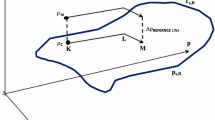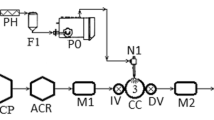Abstract
In this paper, the features of a diagnostic measurement setup have been determined. The purpose of the setup was registration of diagnostic signals taken from an electronically controlled gasoline-powered engine. Special attention has been paid to the presentation of the features of an analog–digital converter card used, as well as to the possibility of its practical use. Another important aspect is the design and programming of computer software dedicated for action along with the setup. The results of the work have been presented using the example of the engine’s microprocessor control module. A diagnostic analysis was conducted, as a result of which sets of the functional elements of the object and its diagnostic signals were determined. Also, the methodology of the diagnostic examination of the technical system was presented. The result was a functional and diagnostic model, which constituted the basis for initial diagnostic information, which is provided by the sets of information concerning the elements of the basic modules and their output signals.















Similar content being viewed by others
References
Będkowski L, Dąbrowski T (2006) Podstawy eksploatacji cz. 2. Wyd. WAT, Warszawa, p 187 (in polish)
Duer S (2004) The concept of assistant system for analogue class technical object servicing. In: Sixth international conference on unconventional elektromechanical and electrical system UEES′04. Alushta, The Crimea, Ukraine, pp 687–690
Dhillon BS (2006) Applied reliability and quality, fundamentals, methods and procedures. Springer—Verlag London Limited, p 186
Gercbach JB, Kordoński CB (1972) Modele niezawodności obiektów technicznych. WNT, Warszawa (in polish)
Gniedenko BW, Bielajew JK, Sołowiew AD (1968) Metody matematyczne w teorii niezawodności. WNT, Warszawa (in polish)
Nakagawa T (2005) Maintenance theory of reliability. Springer—Verlag London Limited, p 264
Nakagawa T, Ito K (2000) Optimal inspection policies for a storage system with degradation at periodic tests. Math Comput Model 31:191–195
Duer S, Duer R, Duer P, Płocha I (2009) Measurement system for the diagnosis of analogue technical objects with the use of artificial neural networks. Academic Journals, Poznan University of Technology, s. Electrical Engineering, Published by Poznan University of Technology, No. (59), pp 61–72
Spath H (1980) Cluster analysis for data reduction and classification of object. Ellis Horwood Ltd., Chichester, UK
Buchannan B, Shortliffe E (1985) Rule—based expert systems. Wesley Publishing Company, Addison, p 387
Hayer-Roth F, Waterman D, Lenat D (1983) Building expert systems. Wesley Publishing Company, Addison, p 321
Jackson P (1990) Introduction to expert systems. Wesley Publishing Company, Addison, p 526
Mathirajan M, Chandru V, Sivakumar AI (2007) Heuristic algorithms for scheduling heat-treatment furnaces of steel casting industries. Sadahana 32(5):111–119
Sinha M, Gupta MM, Zadeh LA (1999) Soft-computing and intelligent control systems, theory and applications. Academic Press, New York, p 321
Tang L, Liu J, Rong A, Yang Z (2002) Modeling and genetic algorithm solution foe the sjab stack shuffing problem when implementing steel rolling schedules. Int J Prod Res 40(7):272–276
Hojjat A, Shih-Lin Hung (1995) Machine learning, neural networks, genetic algorithms and fuzzy systems. John Wiley End Sons, Inc., p 398
Gupta MM, Jin L, Noriyasu H (2003) Static and dynamic neural networks, from fundamentals to advanced theory. John Wiley End Sons Inc., Hoboken, New Jersey, p 718
Wiliams JM, Zipser D (1989) A learning algorithm for continually running fully recurent neural networks. Neural Comput 1:270–280
Zurada IM (1992) Introduction to artificial neural systems. West Publishing Company, St. Paul, p 263
Białko M (2000) Podstawowe właściwości sieci neuronowych i hybrydowych systemów ekspertowych. Wyd. Politechniki Koszalińskiej, Koszalin (in polish)
Gupta MM (2001) Fuzzy tests, fuzzy logic and fuzzy systems, in encyclopedia of physical science and technology. Meyer RA (ed), Academic Press, San Diego, p 452
Author information
Authors and Affiliations
Corresponding author
Rights and permissions
About this article
Cite this article
Duer, S., Duer, R. Diagnostic system with an artificial neural network which determines a diagnostic information for the servicing of a reparable technical object. Neural Comput & Applic 19, 755–766 (2010). https://doi.org/10.1007/s00521-009-0333-4
Received:
Accepted:
Published:
Issue Date:
DOI: https://doi.org/10.1007/s00521-009-0333-4




